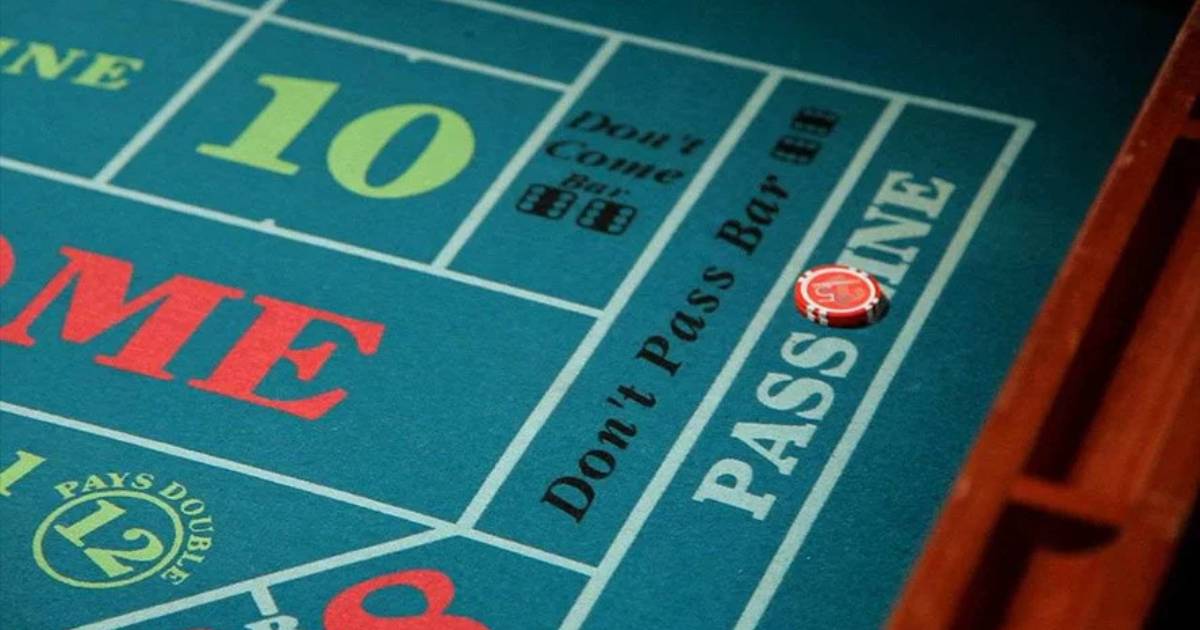Table of Contents
Introduction
Imagine you’re sitting at a poker table, surrounded by the excitement of a Texas Hold’em game. Cards are being dealt, chips are stacking up, and the tension is building. In poker, one important move can change everything: the continuation bet, often called the “c-bet.” Apex Gaming 88 will guide to mastering the skill of making a continuation bet after the flop in Texas Hold’em. We’ll explore when, why, and how to use c-bets effectively to take control of the pot and outplay your opponents.
Understanding the Continuation Bet (C-Bet)
Let’s start by understanding what a continuation bet, or c-bet, means in Texas Hold’em. Simply put, a c-bet is a bet made by the player who raised before the flop, even if their hand isn’t particularly strong. It’s a move with a double purpose: to keep control of the pot and potentially make other players fold their hands.
When to Think About a Continuation Bet
Now, let’s discuss when it’s a good idea to make a c-bet in Texas Hold’em. It all depends on several things you need to carefully consider:
- Your Hand Strength: Look at your hand after the flop. If you have a strong hand, like a high pair or three of a kind, a c-bet is usually a good idea. However, even with a weaker hand, a well-timed c-bet can make your opponents think you have a strong hand and might lead to their folding.
- Opponents’ Playing Styles: Understanding how your opponents play Texas Hold’em is crucial. Do they tend to fold easily, or are they the type to call frequently? Your c-bet strategy should adapt accordingly.
- Flop Texture: Take a good look at the flop – the three cards that come after the first round of betting. A favorable flop for a c-bet is one where your hand has the best chance of winning. If the flop doesn’t seem to favor your opponents, it’s a good time for a c-bet.
- Your Position: Where you sit at the Texas Hold’em table matters. If you’re one of the last players to act, you get to see what your opponents do before making your decision. This can provide valuable information to help you decide whether to c-bet.
Factors to Consider Playing Texas Hold’em
Now, let’s break down these factors:
- Hand Strength: If you have a powerful hand in Texas Hold’em, such as a pair of kings or three of a kind, it’s typically a favorable moment to consider a c-bet. Nevertheless, keep in mind that even with a less strong hand, a strategically timed c-bet can make your opponents hesitate.
- Opponents’ Playing Styles: Take into account how your opponents approach Texas Hold’em game. If they tend to fold easily in response to aggression, employing a c-bet can be a profitable choice. Conversely, if they frequently call bets, it may be wise to be more discerning in your c-bet decisions.
- Flop Characteristics: Examine the flop – the initial three community cards. When the flop appears not to have significantly improved your opponents’ hands, it presents an advantageous scenario for a c-bet.
- Your Table Position: Your position at the Texas Hold’em table can be advantageous. When you find yourself among the last to act, and your opponents opt to check to you, it often indicates weakness, making it an opportune moment to consider a c-bet.
The Importance of Your Table Image
When it comes to Texas Hold’em c-bets, how you come across at the poker table matters. When you make a c-bet, people are more likely to fold if they think you’re a tight and aggressive player. You can win pots using this method without having to reveal your cards.
It is vital to modify the c-bet frequency in accordance with your image. Your opponents could start calling more frequently if they notice that you are placing numerous c-bets. The trick is to remain unexpected.
How to Make a Continuation Bet
Now, let’s dive into how you can make a successful Texas Hold’em c-bet step by step:
- Assess Your Hand and the Flop: After the flop, take a good look at your hand and the community cards. Consider whether your hand has improved or if you can make it look like it did.
- Think About Your Opponents: Try to predict what kind of hands your opponents might have based on their actions. Are they likely to have strong hands, or did the flop miss them?
- Decide on the Bet Size: A c-bet is typically around half to two-thirds of the pot size. This size puts pressure on your opponents while still giving you a chance to win chips.
- Bet with Confidence: When you decide to make a c-bet, do it confidently. Avoid hesitating or showing signs of uncertainty. Consistency in your actions is important.
- Prepare for Further Action: A c-bet might not end the hand. Be ready to follow up with more bets on the turn and river if your opponents call your c-bet.
C-Bet Size and Frequency
Part of the technique in Texas Hold’em that is quite important is the magnitude of your c-bet. Although a standard c-bet is between half and two thirds of the pot, you should modify it according to the circumstances. While greater stakes can force opponents to fold, smaller bets can be effective versus passive opponents.
Don’t forget to vary your c-bet frequency either. Your opponents could start calling your c-bets more frequently if they notice a consistent pattern. You may preserve the element of surprise and keep your opponents guessing by alternating between checks and traps.
Adjusting Your Strategy
- Read Your Opponents: Continually assess your opponents’ playing styles and tendencies. If someone frequently calls your c-bets, it might be time to tighten your range.
- Switch to Checking: If you face resistance or suspect your opponents have strong hands, consider switching from a c-bet to a check. This can save you chips in situations where a c-bet is unlikely to succeed.
- Use Check-Raise: Occasionally, mix in check-raise plays to trap your opponents. This can be effective when you anticipate your opponent’s likely actions after your check.
- Adapt on the Turn and River: A c-bet is just one part of a hand. Be prepared to adapt your strategy on the turn and river based on the changing board and your opponents’ actions.
Common Mistakes to Avoid

As with any Texas Hold’em strategy, there are common mistakes to avoid when making a continuation bet:
- Becoming Predictable: Don’t fall into the trap of making a c-bet every time you raised before the flop. Being too predictable makes you an easy target.
- Ignoring Adaptation: A rigid strategy can lead to losses. Be willing to adapt based on the unique dynamics of each hand and opponent.
- Not Observing Opponent Reactions: Pay attention to how your opponents react to your c-bets. If they frequently call or raise, it’s a sign that your c-bet strategy may need adjustment.
- Misjudging the Flop: Be cautious when c-betting on flops that are likely to hit your opponents’ hands. Misjudging the flop can lead to costly mistakes.
- Losing Patience: Not every c-bet will succeed. Avoid getting frustrated and escalating your bets unnecessarily. Sometimes, a well-timed check or fold is the best choice.
Case Studies and Hand Examples

To illustrate these concepts, let’s look at some real-life hand examples:
Case Study 1: Pocket Aces and a Favorable Flop
Imagine you have pocket aces (A♠️ A♥️) in a late position. You raised before the flop, and the big blind called. The flop is 9♠️ 5♦️ 2♠️, which doesn’t seem to help your opponent. They check, and it’s your turn. This is a great spot for a c-bet.
- Assess Your Hand: You have an incredibly strong hand with pocket aces.
- Think About Your Opponent: Your opponent in the big blind likely has a wide range, but this flop probably missed their hand.
- Decide on C-Bet Size: Go for a c-bet around 60% of the pot to apply pressure.
- Bet with Confidence: Make your bet confidently to represent strength.
- Be Ready to Follow Up: If your opponent calls, be prepared to bet on the turn and river if necessary.
Case Study 2: Missed Flop with a Well-Timed C-Bet
You’re in a middle position with 8♠️ 9♣️. You raised before the flop, and the button called. The flop is Q♦️ 6♠️ 2♣️, which doesn’t seem to help your hand. However, your opponent checks, and it’s your turn. This is a situation where a well-timed c-bet can work effectively as a bluff.
- Assess Your Hand: You have a weak hand with 8♠️ 9♣️, but the flop didn’t help your opponent much either.
- Think About Your Opponent: The button, being in a late position, could have a wide range of hands.
- Decide on C-Bet Size: Opt for a smaller c-bet, around 50% of the pot, to apply pressure without risking too many chips.
- Bet with Confidence: Make your bet confidently to represent strength.
- Be Ready to Follow Up: If your opponent calls, consider continuing with aggression on later streets to maintain pressure.
These case studies provide real-world examples of when and how to execute continuation bets based on hand strength, flop texture, and opponent tendencies.
Conclusion
In conclusion, the continuation bet is a valuable tool in Texas Hold’em. When used wisely, taking into account the factors we’ve discussed, it can help you stay in control of pots and keep your opponents guessing. Remember that success in Texas Hold’em comes from being adaptable, so continuously evaluate your opponents and be willing to adjust your c-bet strategy when needed.
By mastering the art of the continuation bet, you’ll be better equipped to navigate the complexities of Texas Hold’em and gain an advantage over your opponents at the poker table.
Check out our blogs covering a range of casino game topics.
- HIGH ROLLER LIFESTYLE: BALANCING RISK AND REWARD IN CASINO GAMBLING
- METAVERSE MONEY: IN-GAME CURRENCY REVOLUTION IN CRASH GAMES
- THE FUTURE OF VIRTUAL REALITY IN META-GAME DEVELOPMENT
- CASHING OUT MADE EASY: YOUR ESSENTIAL GUIDE TO WITHDRAWING ONLINE CASINO EARNINGS
- MIMICKING PROFESSIONAL PLAY STYLES IN CRAZY TIME LIVE
- CASINO CRAPS STRATEGY: HOW TO BET ON THE DON’T PASS LINE
- GEMS, REELS, AND RESPONSIBLE PLAY: YOUR PATH TO FORTUNE IN SLOT GAMING
- OFFBEAT COIN PUSHER HACKS FOR SURPRISING BENEFITS
- GAME ON: CLEARING WAGERING REQUIREMENTS MADE SIMPLE AT APEX ONLINE CASINO
- GAMERS REJOICE: FIND YOUR PERFECT MINESWEEPER MATCH IN MINUTES!
- CRACK THE CASINO GAMES JACKPOT CODE: STRATEGIES TO TURN BETS INTO MILLION-DOLLAR WINS!
- CRAZY TIME CASINO: A REVOLUTION IN ONLINE GAMING


